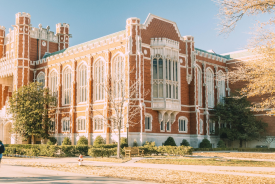The Obama administration has announced new easy-to-understand financial aid form to help students make better decisions regarding their choice of college based on the college's graduation rate.
If the colleges and universities decide to embrace this new form, the students will be able to determine how much debt they incur by the time they graduate and the monthly payment they have to make.
The form will include the percentage of students who graduate, average loan default rate and clearly differentiate between grants and scholarships, according to the Consumer Financial Protection Board and the U.S. Department of Education.
Many colleges and universities use student aid letters that are confusing to understand and don't make clear exactly how much is being offered in aid and scholarships, making it difficult for families to comparison, said Arne Duncan, the secretary of Education.
He added: "We must unravel the mystery of higher education so that students can invest wisely and make the best, most informed decision possible about where to enrol."
It won't be mandatory for the colleges and universities to use the form. But, Duncan urged he will be sending an open letter encouraging all institutions to adopt this 'shopping sheet' for the school year 2013-2014. In June, the Education Department announced that 10 universities had agreed to provide information similar to what is in the new form.
The Consumer Financial Protection Board and the U.S. Department of Education released findings from a report on Friday concluding that risky lending caused private student loan debt to balloon over the last decade, leaving many Americans struggling to pay off loans they cannot afford.
Reportedly, the total loan debt of US students has reached an estimated $1 trillion in April and the Obama administration seems to be eager to help the students when the elections are just round the corner.
The President also recently signed into law a bill to keep federal student loan interest rates from doubling to 6.8 percent on July 1, a rare spot of election-year bipartisanship.
© 2025 University Herald, All rights reserved. Do not reproduce without permission.








